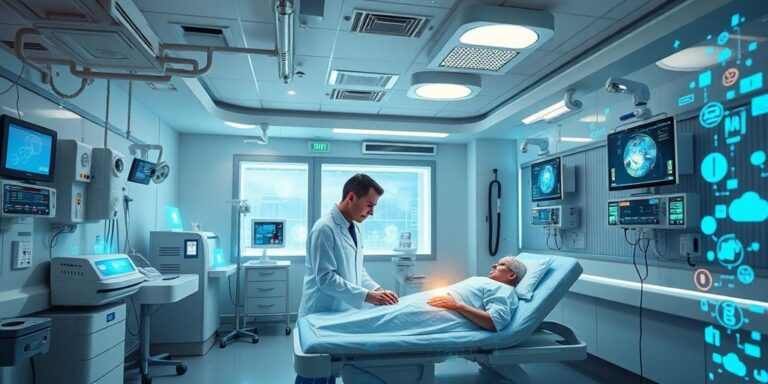IoMT in 2025: Revolutionizing Patient Care
The Internet of Medical Things (IoMT) is poised to transform healthcare significantly by 2025. This network of interconnected medical devices and applications is set to enhance patient care, streamline operations, and reduce costs. Let’s explore the key advancements and impacts expected in the coming years.
Enhanced Remote Patient Monitoring
Remote patient monitoring (RPM) will become more sophisticated and widespread. Wearable sensors and connected devices will continuously collect vital signs, activity levels, and other health metrics. This data enables healthcare providers to:
- Proactively identify potential health issues: Real-time data analysis can detect anomalies and alert doctors to intervene early.
- Personalize treatment plans: Continuous monitoring allows for tailored interventions based on individual patient needs.
- Reduce hospital readmissions: By tracking patient health at home, providers can prevent complications that might otherwise require hospitalization.
AI-Powered Diagnostics and Decision Support
Artificial intelligence (AI) will play a crucial role in analyzing the vast amounts of data generated by IoMT devices. AI algorithms can:
- Improve diagnostic accuracy: AI can identify patterns and anomalies in medical images and sensor data that might be missed by human clinicians.
- Provide decision support: AI-powered tools can assist doctors in making informed treatment decisions based on the latest evidence and patient data.
- Automate administrative tasks: AI can streamline tasks such as appointment scheduling, billing, and insurance claims processing.
Streamlined Healthcare Operations
IoMT will optimize various aspects of healthcare operations, including:
- Inventory management: Connected sensors can track the location and usage of medical equipment and supplies, reducing waste and improving efficiency.
- Asset tracking: Real-time tracking of medical devices and personnel ensures that resources are available when and where they are needed.
- Medication management: Smart pill dispensers and connected medication trackers can improve adherence and reduce medication errors.
Improved Patient Engagement and Adherence
IoMT can empower patients to take a more active role in their healthcare. Connected devices and mobile apps can:
- Provide personalized health insights: Patients can track their progress, monitor their vital signs, and receive personalized recommendations.
- Improve medication adherence: Smart reminders and tracking systems can help patients stay on track with their medications.
- Facilitate communication with healthcare providers: Patients can easily communicate with their doctors and nurses through secure messaging platforms.
Challenges and Considerations
While IoMT holds immense promise, it also presents several challenges that need to be addressed:
- Data security and privacy: Protecting patient data from cyber threats and ensuring compliance with privacy regulations is crucial.
- Interoperability: Ensuring that different IoMT devices and systems can communicate with each other is essential for seamless data exchange.
- Regulatory frameworks: Clear and consistent regulatory frameworks are needed to govern the development, deployment, and use of IoMT technologies.
Conclusion
By 2025, IoMT will have a transformative impact on patient care, healthcare operations, and the overall healthcare ecosystem. As technology advances and challenges are addressed, IoMT will play an increasingly important role in improving health outcomes and reducing healthcare costs.




